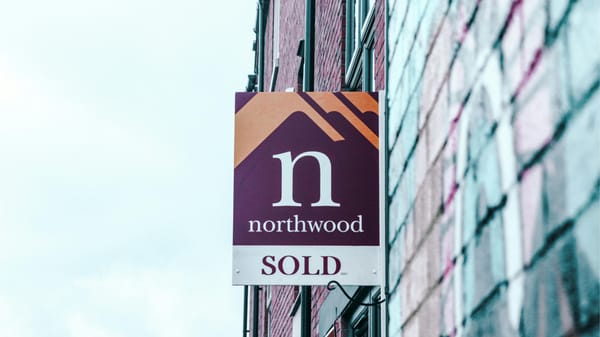Brent Cross Town Named UK’s Best Place to Buy in 2025: What It Means for Property Professionals

London’s newest neighbourhood is setting new standards in sustainability, connectivity and community — here’s why it matters beyond just homebuyers.
Every year, The Times publishes its influential list of the best places to live and buy in the UK. In 2025, the winner is not a quaint village in the Cotswolds or a revitalised northern town — it’s Brent Cross Town, a purpose-built neighbourhood in north-west London.
Brent Cross Town is more than a housing development. Billed as a “15-minute town,” it combines housing, green space, retail, sport, and education across 180 acres. It’s a joint venture between Related Argent and Barnet Council, and it’s being built with a clear focus: creating a new blueprint for city living that prioritises wellbeing, connection, and long-term sustainability.
But this isn’t just a headline for would-be homeowners. It has serious implications for developers, landlords, consultants, and investors who want to understand where the market is going — and where the next opportunities lie.
What Makes Brent Cross Town Stand Out?
Brent Cross Town is being designed from the ground up as a 21st-century town. Unlike many masterplans that slowly evolve, this one is pushing ahead with a firm identity and a clearly defined offer for future residents and businesses alike.
Key features include:
- Carbon neutrality by 2030 — all buildings will run on electricity and be connected to a site-wide network powered by renewable energy sources.
- 44 acres of parks and open space, including five new play areas and a network of cycling and pedestrian routes.
- A new Thameslink station linking residents to King’s Cross in under 15 minutes.
- A dedicated indoor baseball and softball stadium, the first of its kind in the UK.
- Partnerships with educational institutions, including the new campus of South Hampstead High School.
- A mix of tenure types, from for-sale homes and affordable housing to build-to-rent schemes managed by UNCLE.
It’s not just the amenities — it’s the integration. From transport to culture, education to green space, Brent Cross Town is aiming to deliver a connected lifestyle that rivals more established postcodes.
What This Means for Developers and Placemakers
The success of Brent Cross Town is more than a well-executed project — it’s a signal of where policy, consumer demand, and developer ambition are all heading.
1. Sustainability is No Longer Optional
The site’s commitment to carbon neutrality by 2030 is not just a nice-to-have. It’s embedded into the planning, engineering, and utility networks from day one. Residential and commercial buildings will run entirely on electricity, and the neighbourhood will have a central energy centre powered by renewable sources.
For other developers, this raises the bar. Local authorities and planning departments will now point to Brent Cross Town as a working model. Expect more emphasis on embodied carbon calculations, electric-only infrastructure, and site-wide renewable integration in future planning negotiations.
If your pipeline includes mixed-use or large-scale residential developments, now is the time to ensure that sustainability isn’t just a chapter in your brochure — it needs to be part of the core design and delivery strategy.
2. Community Integration Drives Value
Too many developments are still built with the housing first, and everything else bolted on later — shops, schools, green space, even infrastructure.
Brent Cross Town reverses that model. The public parkland, community hubs, and transport links are central to the vision. It’s not about creating a housing estate — it’s about building a real place where people want to stay, not just pass through.
The key insight for developers is this: integrated communities command a premium. Not just in price, but in absorption rates, lower voids, stronger tenant retention, and resale value. Investors and buyers are increasingly putting lifestyle, access to nature, and community engagement above raw square footage.
If you’re working on a regeneration site or masterplan, consider how placemaking can be designed into the process from the very start — and how that investment might actually improve financial returns.
Implications for Investors and Landlords
Brent Cross Town might feel like a long-term hold for pension funds and institutional players, but it has lessons for all scales of investor.
1. Underrated Areas Can Outperform
For years, Brent Cross was known for its shopping centre and motorway junctions — not its walkability or charm. But the strategic investment in infrastructure, branding, and community has flipped perceptions.
This mirrors a wider trend in London and the UK: fringe or overlooked zones are being repositioned through high-quality design and planning. With the right combination of connectivity, amenities, and design standards, formerly “unfashionable” areas can become hotbeds of demand.
If you’re looking to grow a portfolio, Brent Cross Town is a case study in how to spot — or create — an upswing in sentiment. Follow the infrastructure. Follow the planning announcements. And pay close attention to how masterplans are framed — not just what they include, but what story they tell.
2. The Mid-Market Is Getting More Competitive
Homes in Brent Cross Town start around £420,000, with an average asking price closer to £730,000 — relatively affordable for a new-build scheme in London with strong transport links.
This puts pressure on other schemes in the £600,000–£800,000 range to justify their pricing. Buyers now have more choices, and schemes without strong placemaking credentials may start to lose appeal.
For landlords, this means competition is rising in the mid-market rental space. Build-to-rent operators at Brent Cross will offer concierge services, gyms, co-working spaces, and flexible leases. Small landlords nearby will need to compete with more than just square footage and location. Service levels, design, and flexibility are becoming more important to tenants — especially younger renters and remote workers.
What Local Agents, Consultants and Operators Should Be Watching
Brent Cross Town is creating a ripple effect. For local businesses and property professionals, there are both immediate opportunities and longer-term considerations.
- Estate and letting agents: Get familiar with the area’s unique features. Buyers and tenants will need guidance on why this neighbourhood is different. Understand the masterplan, the phasing, and the long-term vision.
- Commercial leasing teams: Retail, leisure and hospitality opportunities will grow as footfall increases. Businesses serving a residential-first community will be in demand — not just high street chains, but curated, localised offerings that reflect the area’s identity.
- Architects and planners: Brent Cross Town will become a reference point in planning submissions and public consultations. If you’re designing elsewhere, expect comparisons.
- Facilities managers and operators: High-spec communal areas, energy networks, and shared amenities require proactive, tech-enabled management. This is a growth area for professional service providers in property management and operations.
Is This a Model for Other UK Cities?
Not every city has the capital, land or policy environment to replicate Brent Cross Town exactly. But the underlying principles — carbon targets, mixed-tenure housing, walkability, integrated green space — are universally relevant.
Cities like Birmingham, Manchester, Leeds and Glasgow are already trialling similar concepts through local development frameworks and combined authority initiatives. For regional developers and investors, Brent Cross Town is not just a London story — it’s a model for how ambitious, future-facing neighbourhoods can be delivered at scale.
Expect more “15-minute city” concepts, more integrated transport planning, and more funding tied to community value rather than raw housing numbers.
Final Thought
Brent Cross Town isn’t just a good place to live — it’s a signal of where UK development is headed.
As buyers and renters prioritise wellbeing, connectivity, and a sense of place, developers and property professionals will need to respond with more than just bricks and mortar. The winners in this market will be those who understand how to build value not just into buildings, but into the lives of the people who use them.
Whether you’re building, investing, or advising, the message is clear: it’s not just about location anymore — it’s about intention.





